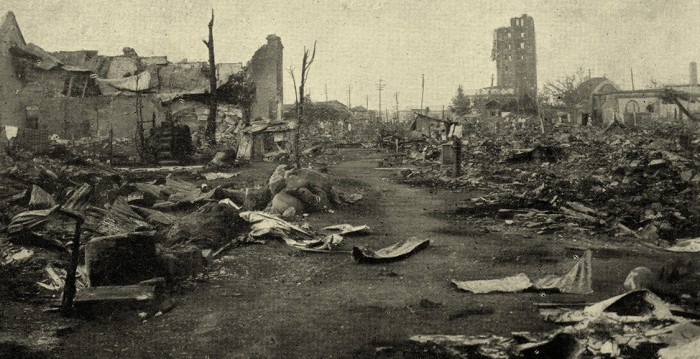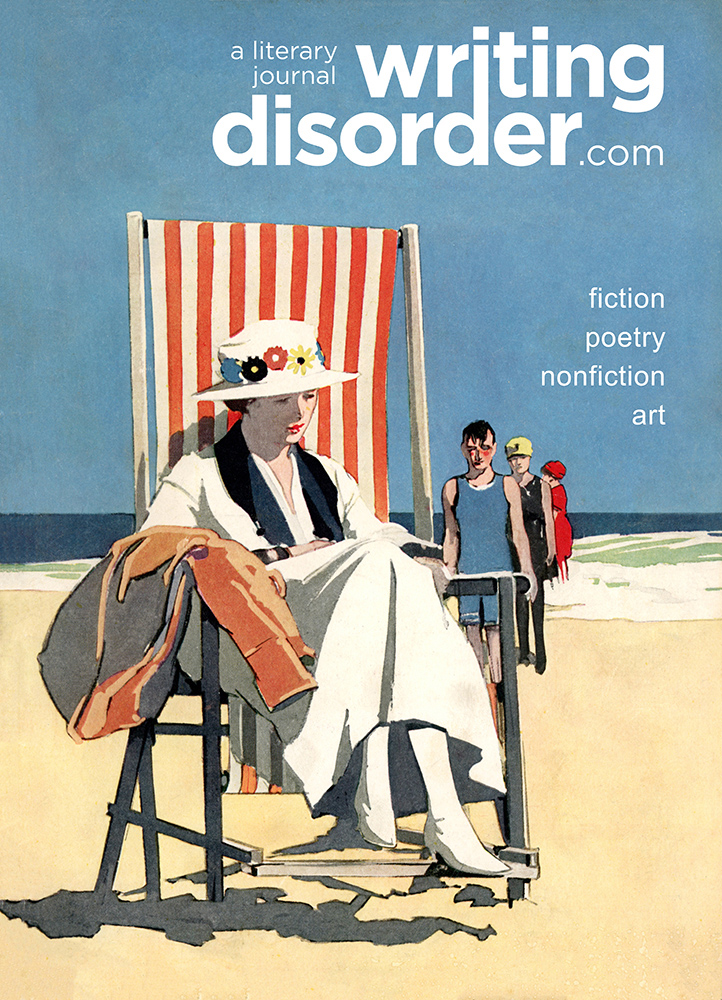In Quest of Indelible Images:
Re-Discovering the Great Kantu Earthquake of 1923
Through Photo-Archeology
By Paul Garson

 he 5,000 years of human civilization can be viewed as a continuum of indelible images. Enter the proliferation of the camera into the equation, and the images recording more recent history have gained the status of time machines, each photograph capturing an instance of reflected light that came only once into being and then vanished. However, in untold instances those very images themselves have disappeared, yet to be unearthed and then re-examined in an effort to bring into focus pivotal events.
he 5,000 years of human civilization can be viewed as a continuum of indelible images. Enter the proliferation of the camera into the equation, and the images recording more recent history have gained the status of time machines, each photograph capturing an instance of reflected light that came only once into being and then vanished. However, in untold instances those very images themselves have disappeared, yet to be unearthed and then re-examined in an effort to bring into focus pivotal events.
While the evolution of the camera and photography can be traced back to ancient China, untold billions of photos have been taken since the “modern” portable camera appeared in 1888 with the first Kodak. Since then and in addition to the professional photographer serving science and technology, the amateur’s “snapshots” have also provided a wealth of documentation that has chronicled history in the making.
Though not cast in stone or metal, these relatively fragile slips of coated paper, are still in essence, “artifacts” that have survived war and natural disaster over ever increasing periods of time. The role of the photo-archeologist is to search for those that can cast the past in a new and revealing light. It requires diligence, patience and an abiding curiosity to literally spend thousands of hours “digging up” the images from around the globe via the Internet as well as from scouring swap meets, auctions, collector photo events and garage sales ad infinitum. Further effort via computer software is often required to maximize the quality of the images, as well as months of research that takes the photo-archeologist through many a twist and turn investigating rare books, vintage magazines, film documentaries and of course, surfing the Web, in order to thread the images together in a tapestry of some coherence, all in the hopes the final outcome would provide the reader/viewer with the ah!-factor experienced during the adventure of discovery.
In each instance the “dig” begins with a chance meeting with a single photograph be it from an old scrapbook or found as a postcard. Then the hunt is on …. and it may be days, weeks, months, even years before the next thread is found. Following is an excerpt from one such “photo-archeological dig,” all images form the author’s collection.
Like a shard of pottery or glint of a buried relic, it all begins with one fragment, the first piece of the puzzle.
* * * * *
The Great Kanto Earthquake of 1923: Portent of Disaster Unheeded, Seeds of a Future War Sown
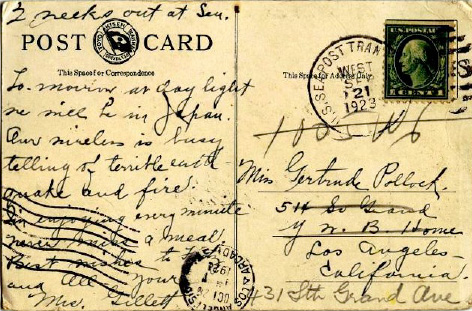
Two Weeks Out at Sea- Ominous First Warning – September 23, 1923
A postcard transmitted via U.S. Seapost Transmission from an unidentified cruise ship bound for Japan, Mrs. Gillet has written to a Miss Gertruck Pollack in Los Angeles. Her message reads, “Tomorrow at daylight we will be in Japan. Our wireless is busy telling of terrible earthquake and fire. I’m enjoying every minute, never miss a meal. Best wishes to Fritz and all.”
The Next Thread – Original Photo 1923– Passengers aboard the Empress of Australia
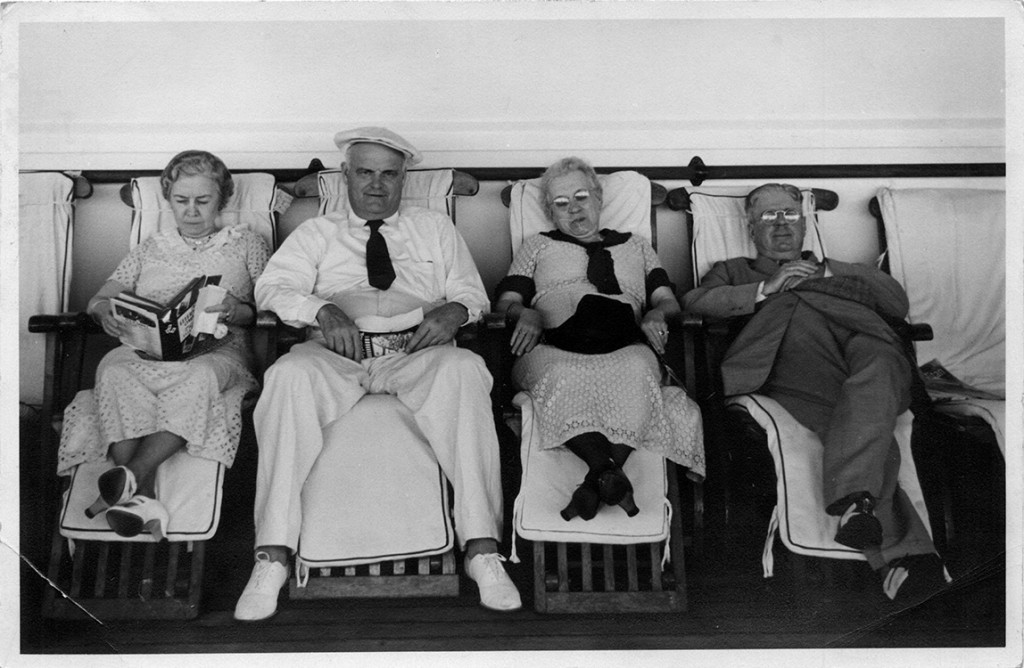
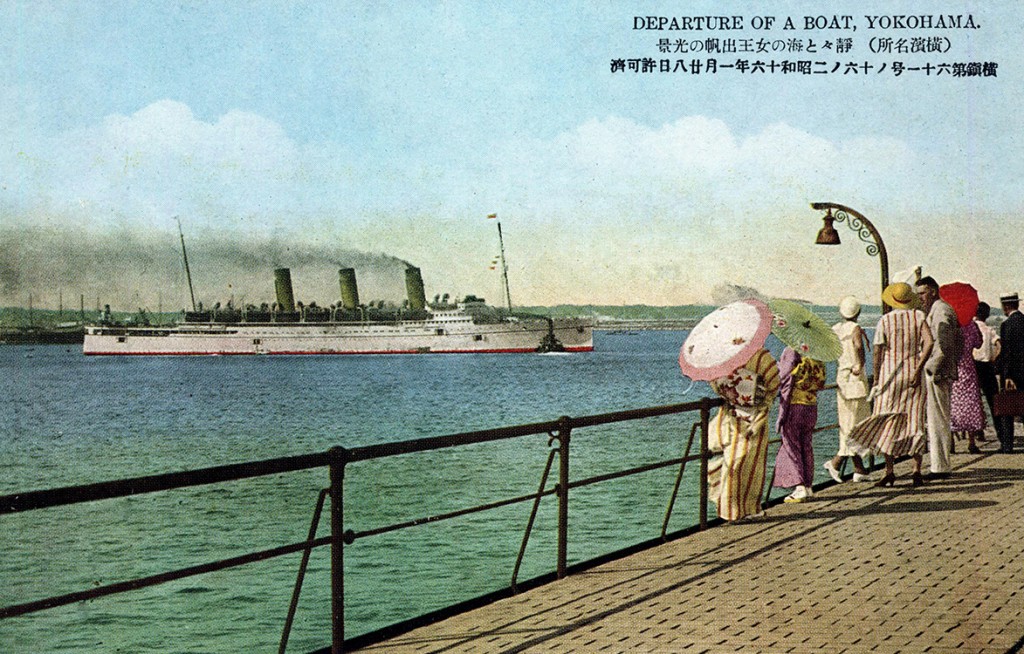
The luxury cruise ship was equipped to accommodate 400 First, 165 Second and 1200 Third Class passengers. All First Class passengers were provided with cabins fitted withbedsteads without the “annoyance” of upper berths. The public rooms were lavishly detailed in Louis XVI motif while the indoor pool was decorated in Pompeian style. These passengers onboard that Saturday, Sept. 1, 1923 would find themselves caught on the very edge of a maelstrom of fire and destruction, the ship entangled and unable to leave its mooring.
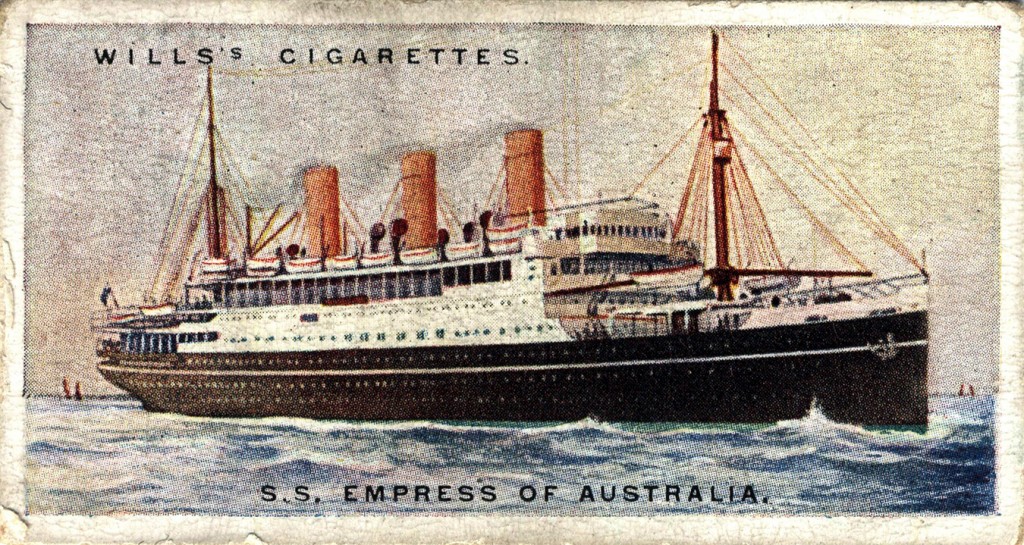
The Empress of Australia – Hero Ship
An illustration appearing on a 1924 issue trading card found in Wills’s Cigarettes shows the Canadian Pacific Liner Empress of Australia, a survivor of the Yokohama earthquake.
She became the most famous of the ships that served as a sanctuary during the earthquake and fires. At 21,850 tons, the 615 ft. long, 75 ft. wide, the streamlined silver and black steamer was able to save over 2,000 lives thanks to the courage and leadership of its captain, Samuel Robinson. His heroic efforts would see him honored as a Knight Commander of the British Empire as well as the recipient of decorations by Emperor Hirohito of Japan and the King of Siam.
* * * * *
Point of Intersection – Where the Images Lead
Since 1871, in a country known for its traditions, at exactly the noon hour, the loud report or don of a cannon being fired from the plaza of Tokyo’s Imperial Palace notified the city’s inhabitants that the day was proceeding normally. On the muggy Saturday morning of September 1, 1923, the muffled “bang” to which the citizenry of the island nation’s capital was long accustomed never sounded. At one minute and 15.4 seconds before the noon hour struck, the Earth beneath Japan literally rose in revolt.

Apocalypse Now
Rather than the remains of Hiroshima or Nagasaki after their destruction by nuclear bombs in August 1945 during the last days of WWII, the vast devestation seen here was visited some 22 years previously upon the thriving Japanese seaport city of Yokohama. The 8.3 level earthquake struck on September 1, 1923 from an epicenter located hundreds of feet beneath Izu Oshima Island in Sagami Bay some 25 miles from Tokyo, seismic waves sent the Honshu island’s Plain of Kanto heaving for at least four minutes and for as many as ten, instantly toppling hundreds of thousands of factories, homes and government buildings and in the process setting aflame the city of mostly wood and rice paper. Seen here is a portion of a panoramic photograph of Yokokama taken some days afterwards as evidenced by the resurrection of the utility poles.
The combination of flame and flood, mud slides and avalanches impacting Yokohama and Tokyo and surrounding areas killed between 105,000-140,000 people and injured tens of thousands more as well as left nearly 2,000,0000 homeless. By comparison the WWII atomic explosions killed an estimated total of 105, 000. The Great Kanto Earthquake as it was called had been accurately predicted, but the warning was ignored to disastrous result. Greater disaster would follow as the destruction of the two cities would indirectly and directly help fan the flames of a global war.
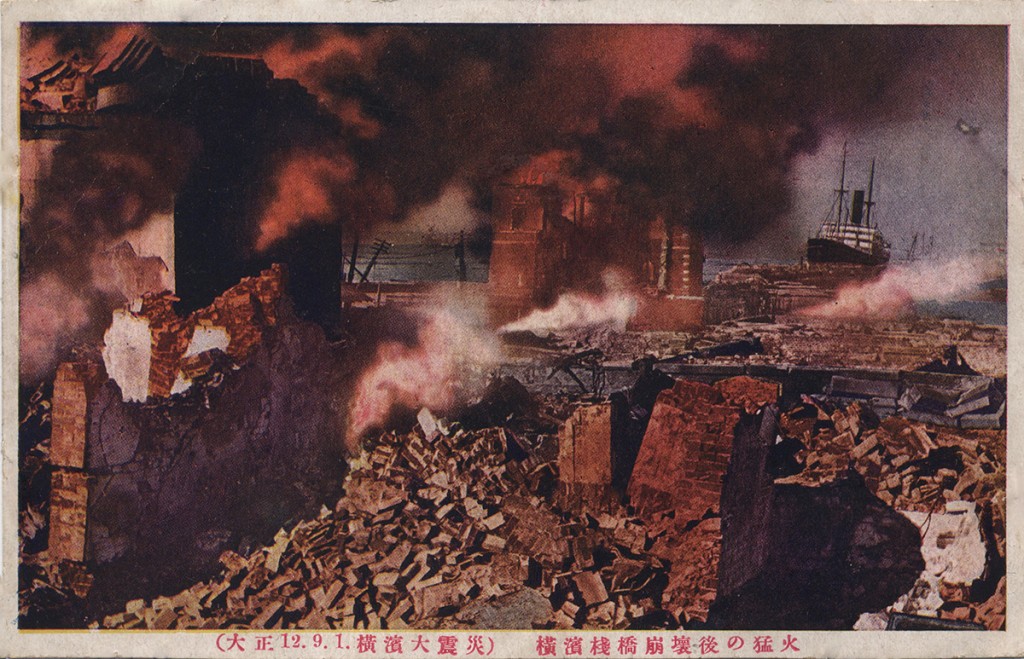
Aftermath
Amidst the destruction, a cameraman has photographed the remains of the Ryounkaku, one Tokyo’s best known landmarks situated in the Asakusa entertainment district. The 220-foot tall “skyscraper” containing many stores and shops was also known as the “12-Storey” and “Cloud Scraper,” the octagonal brick building designed by British water engineer W.K. Burton under contract to Tokyo authorities. Completed in 1890 it was for many years the tallest building in Japan. From its rooftop one could view all of Tokyo. And from almost anywhere in city you could see it as well. During the earthquake it broke at the eighth floor, the top four floors crumbling, its skeletal shell left standing for months until Japanese army engineers dynamited its remains while clearing the post-quake rubble.
Tokyo Lunarscape
In the foreground and distant background the white-cladrescuers comb the debris field, the fires, some 130, having subsided after 40 continuous hours. Some two-thirds of the city felt the effect of the earthquake while fire consumed all of it. Once the embers had cooled, thousands of bodies had to be extricated from the pancaked buildings. Amidst the ruins a lone traffic tower still remains standing, although the streets, partially cleared show, no resumption yet of vehicular traffic.
Some 40 miles to the east of Tokyo, the coastal resort city of Kamakura was also struck by the earthquake, the 13th Century bronze Great Buddha, weighing some 93 tons, slid forward on its base two feet while the surrounding buildings were destroyed, the area’s beach hit by a 20-ft. tsunami that, along with the earthquake and resulting fires, claimed over 2,000 lives. Here the seismic event raised the sea floor and beach some six feet.
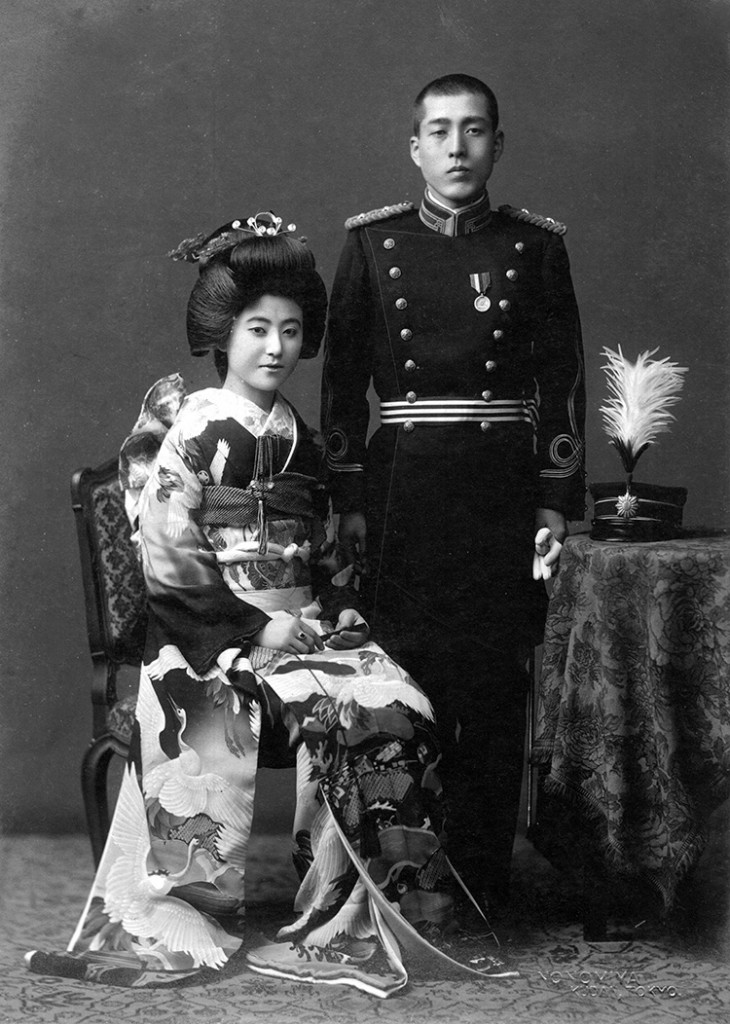
Formal Portrait
While the West calculated the year as 1921, the Empire of Japan officially counted it as 2583, time out of joint as it were. The collision of long isolated feudal Japan with the modern world led to more than conflicting clothing styles as evidenced by an officer’s Western influenced Imperial Navy uniform and his bride’s traditional kimono, the latter’s creation requiring the total production of 5,000 silkworms.
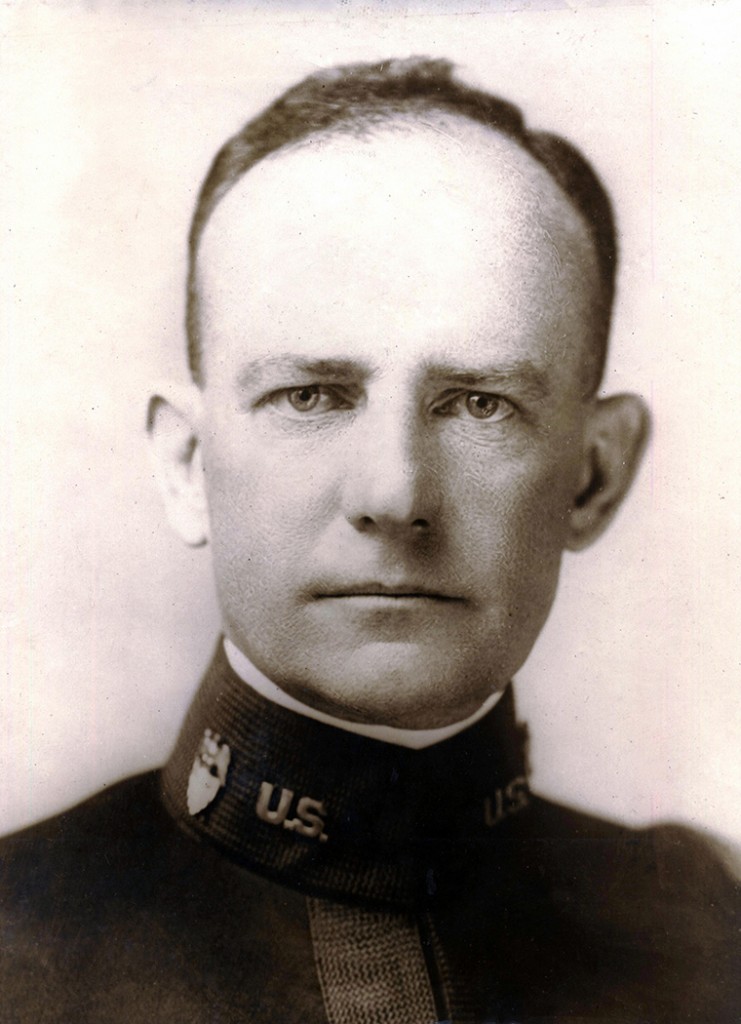
America Sends Disaster Relief with Semi-Disastrous Result
Seen in an original 1923 photograph, Brig. Gen. Frank R. McCoy, who had by chance recently arrived in Japan on leave prior to the earthquake, was then designated to the post of Director General of American Relief. He had his job cut out for him. As a result of the Kanto Earthquake and collateral damage the area suffered estimated damages equivalent to $1 billion.
America mounted an unprecedented relief effort, an exercise of global good will made possible by the combined efforts of the U.S. Navy, Army and Marines bolstered by monetary and material contributions by the American public and business community on a scale never seen before. While their attentions were focused on U.S. citizens (167 killed, many injured among some 500 foreign casualties), the effort aided the Japanese as well through food and supplies and the rebuilding of infrastructure. Through the efforts of the American Red Cross and then U.S. President Calvin Coolidge some $12,000,000 was raised, the monies turned over to the Japanese Red Cross for distribution. One shipment from the west coast of the U.S., among tons of foodstuffs, included nearly 5,000 kimonos.
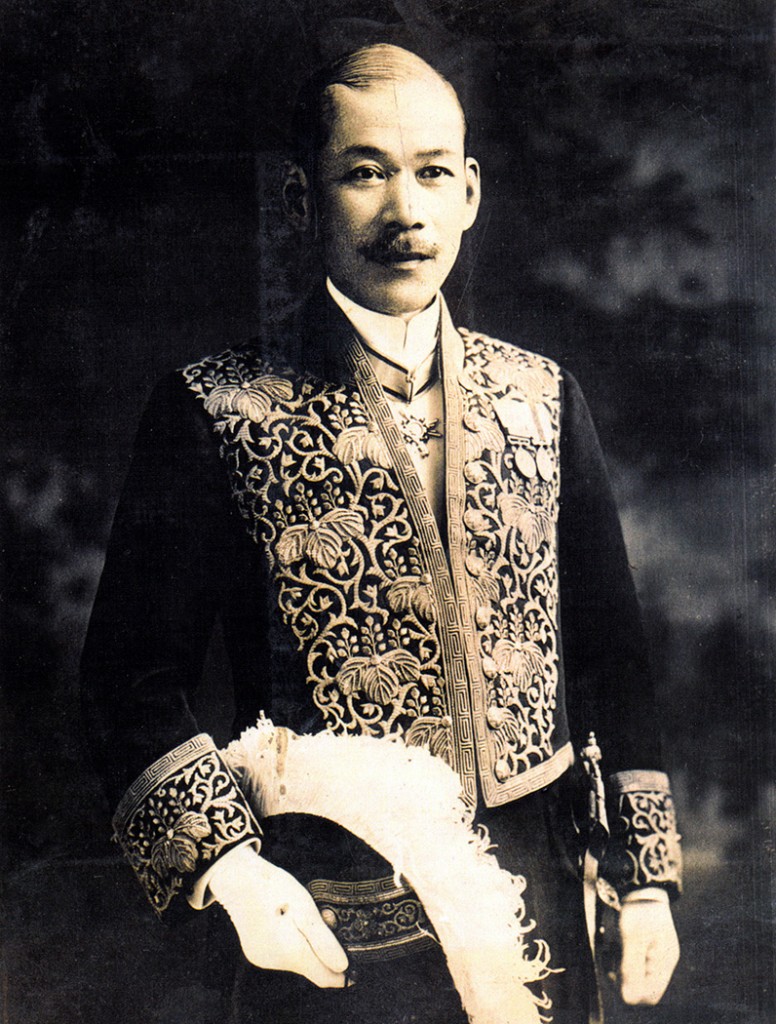
Seismic Seer Unheeded
(Photo courtesy of Kazumi Terada, Immaura’s great-grandaughter)
In 1905 Akitsune Imamura, then 35, a member the Seismology Department at Tokyo Imperial University, and a leading if controversial researcher seeking a means by which to forecast earthquakes, warned against the fragility of the alluvial landfill as well as the susceptibility of the vast number of wooden structures to massive fire damage in the event of an earthquake. Imamura made detailed recommendations to prepare and ameliorate such an eventualityand even virtually pinpointed the location of the next great quake, moreover predicting its time frame. He also was one the first to associate earthquakes as the cause of tsunamis and would build the first “earthquake proof” house. While Japan was well-versed in its seismic vulnerability, his university superior belittled his doomsday forecast and when a local newspaper splashed his warnings in lurid terms, he became a subject of ridicule. His vindication on September 1, 1923 would be a bitter one, two cities destroyed to prove him right. He would survive both the earthquake and WWII and gain wide recognition for his contributions to seismology.
As for the predictions of future disasters, Akitsune Imamura, the vindicated and then much heralded seismologist who had forecast the Great Kanto Earthquake, years later predicted a second major earthquake, one that would be generated near Osaka. He again called for earthquake preparedness, but was ignored for a second time. 1300 peopled died on December 7, 1944 when the quake struck at the point Imamura had predicted, the date coincidental to the day of the Pearl Harbor attack and seen by some Western observers as divine retribution, by others as the human ability to repeatedly ignore the warnings of history.
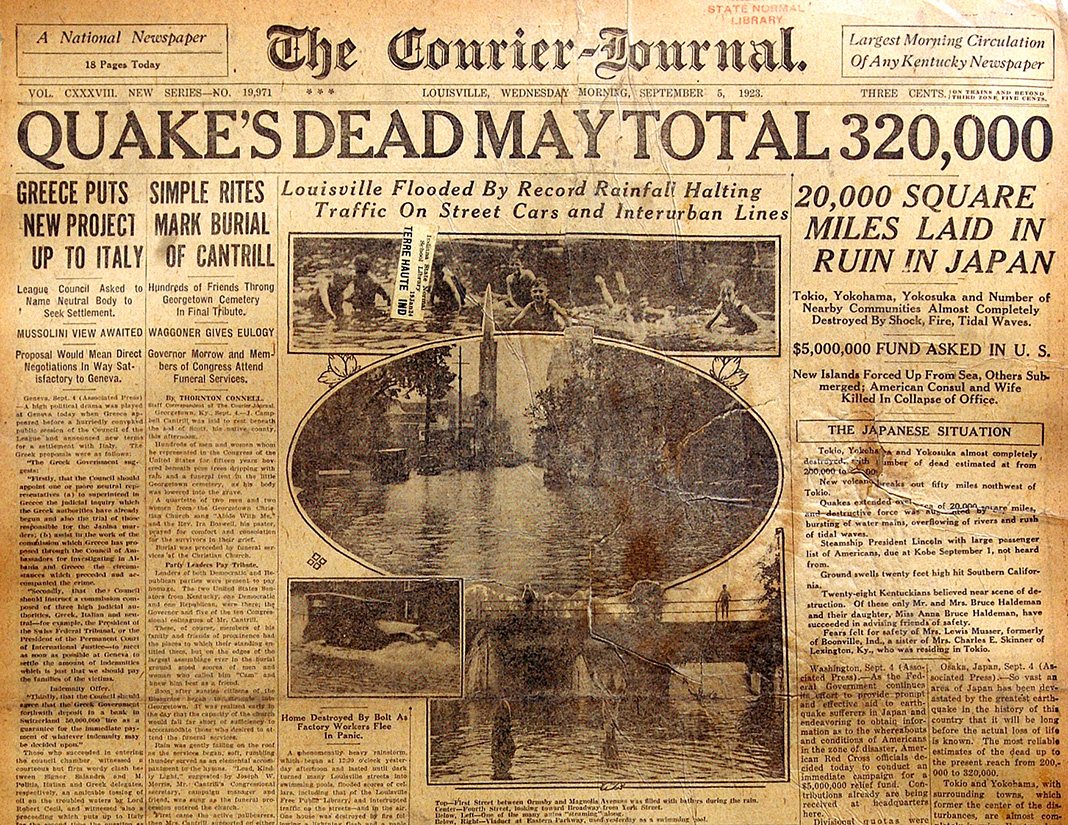
The Front Page of the Louisville, Kentucky The Courier-Journal – Wednesday Morning edition September 5, 1923
The feature article erroneously reported the eruptions of volcanoes 50 miles northwest of Tokyo but accurately as “the greatest earthquake in the history of this country” as well as the 20 foot swells that reached the California coast. Details included concerns over 29 missing Kentuckians then in Japan. At this time Tokyo was still being spelled Tokio in U.S. publications.
BIO
 Paul Garson is a writer and photographer. He has contributed to many magazines and periodicals, and has published both fiction and nonfiction books as well as written two screenplays that have been produced. He served as a university instructor of composition and writing, as well as a martial arts instructor. His public relations and marketing projects included several for national and multinational companies.
Paul Garson is a writer and photographer. He has contributed to many magazines and periodicals, and has published both fiction and nonfiction books as well as written two screenplays that have been produced. He served as a university instructor of composition and writing, as well as a martial arts instructor. His public relations and marketing projects included several for national and multinational companies.

